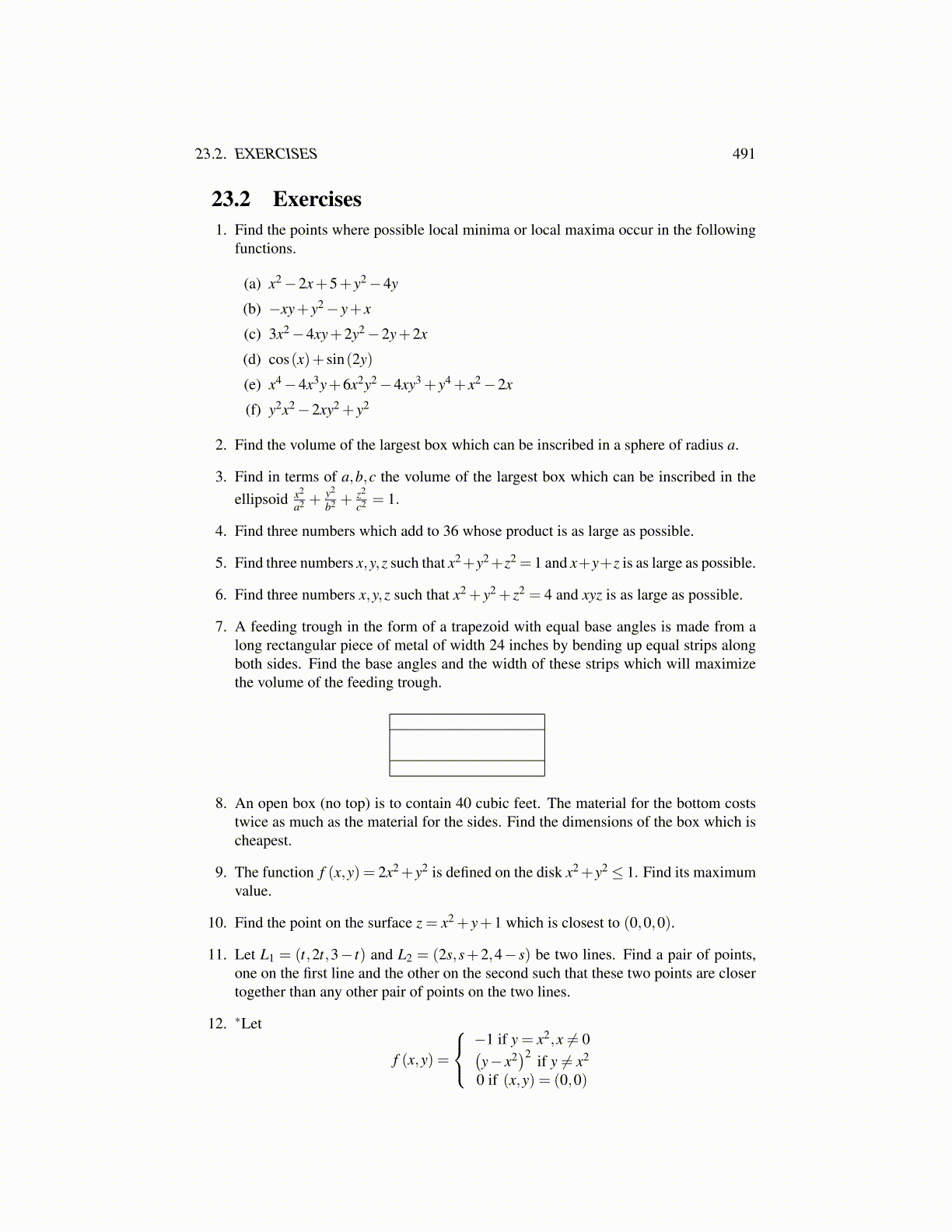
23.3. THE SECOND DERIVATIVE TEST 491
Here is another example.
Example 23.3.4 Let f (x,y) = 2x4 −4x3 +14x2 +12yx2 −12yx−12x+2y2 +4y+2. Findthe critical points and determine whether they are local minima, local maxima, or saddlepoints.
fx (x,y) = 8x3 −12x2 +28x+24yx−12y−12 and fy (x,y) = 12x2 −12x+4y+4. Thepoints at which both fx and fy equal zero are
( 12 ,−
14
),(0,−1), and (1,−1).
The Hessian matrix is(24x2 +28+24y−24x 24x−12
24x−12 4
)and the thing to determine is the sign of its eigenvalues evaluated at the critical points.
First consider the point( 1
2 ,−14
). The Hessian matrix is
(16 00 4
)and its eigenvalues
are 16,4 showing that this is a local minimum.
Next consider (0,−1) at this point the Hessian matrix is(
4 −12−12 4
)and the
eigenvalues are 16,−8. Therefore, this point is a saddle point. To determine this, find theeigenvalues.
det(
λ
(1 00 1
)−(
4 −12−12 4
))= λ
2 −8λ −128 = (λ +8)(λ −16)
so the eigenvalues are −8 and 16 as claimed.
Finally consider the point (1,−1). At this point the Hessian is(
4 1212 4
)and the
eigenvalues are 16,−8 so this point is also a saddle point.Below is a graph of this function which illustrates the behavior near saddle points.